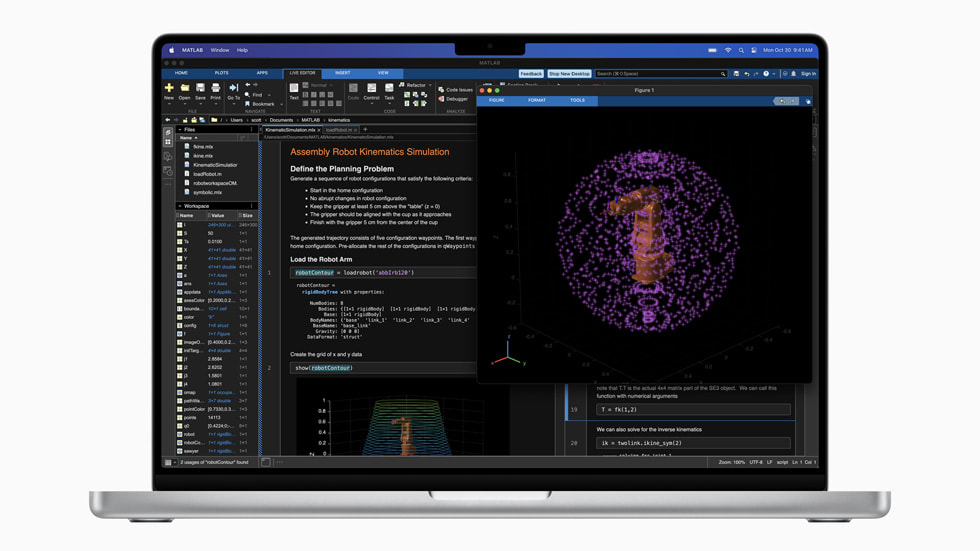Apple introduced new hardware despite a Halloween-themed virtual event. The company revealed its latest series of M3 chipsets, which include the M3, M3 Pro, and M3 Max. Furthermore, Apple unveiled a set of new devices featuring these upgraded processors, namely a fresh 14-inch and 16-inch MacBook Pro, along with a 24-inch iMac.

Apple began producing its M-series processors in 2020. While the company has unveiled the previous chip iterations on a somewhat unpredictable schedule over the past three years, they consistently followed the same pattern: the entry-level chips (M1 and M2) were initially introduced, followed by the high-end variants (Pro, Max, and Ultra models) at a later date. However, for the first time, Apple has simultaneously introduced three tiers of its new chip: the M3, M3 Pro, and M3 Max.
In contrast to their predecessors, which were manufactured using 5-nanometer process technology, all three of these new chips are now crafted with a 3-nanometer process. This technology crams more transistors into a smaller space, resulting in improved speed and power efficiency for the chips.
The new M3 chips introduce several novel features to Apple’s silicon lineup. The first, a capability referred to as “dynamic caching,” enables the processor to allocate memory for each task on-the-fly, adjusting the allocation as needed rather than setting aside a fixed amount of memory for a task, whether it requires it or not. This results in a more efficient utilization of system resources. The other innovative features, ray tracing and mesh shading, find their application in graphics-intensive games and applications. Game developers can harness ray tracing to create more precise lighting effects, such as reflections and shadows, while hardware-accelerated mesh shading enhances the visual quality of in-game scenes, ensuring smoother rendering without interruptions.
Apple asserts that the M3 lineup delivers significant performance enhancements compared to its prior chips in graphics rendering, core CPU operations, and machine learning tasks. Naturally, the extent of these improvements will become more apparent as we conduct in-depth testing and analysis.
Now, let’s explore the distinctions between each version of the next-generation chipsets. The base M3 chip boasts an 8-core CPU and up to a 10-core GPU, coupled with a maximum of 24 gigabytes of unified memory. Moving up the hierarchy, the M3 Pro features a 12-core CPU, an 18-core GPU, and supports up to 36 GB of unified memory. The most powerful among them is the M3 Max, equipped with a 16-core CPU, an impressive 40-core GPU, and the capability to accommodate up to 128 gigabytes of unified memory.

It has been three years since Apple introduced its vibrant lineup of desktop computers, and now the colorful iMacs have received an update. Externally, the hardware remains unchanged, featuring a 24-inch, 4.5K Retina display, a 1080p FaceTime camera, a six-speaker sound system, and high-quality microphones. The familiar color options, including green, orange, pink, yellow, purple, blue, and silver, are retained. The base model includes two Thunderbolt ports, while the high-end models offer two Thunderbolt ports and an additional pair of USB 3 ports, with support for Gigabit Ethernet.
Each iMac is bundled with peripherals that match its color scheme. Buyers can choose between a standard Magic Keyboard or the Touch ID-equipped version, along with either a Magic Mouse or Magic Trackpad. Notably, Apple has not replaced the Lightning ports with USB-C on these accessories, an interesting choice considering the company’s gradual shift toward the USB-C standard in its other products, as exemplified by the iPhone 15 released this year. However, this decision may be welcomed by those who prefer to continue using their Lightning cables.
The sole new feature is the inclusion of the M3 processor under the hood. Customers can select between an 8-core GPU or a 10-core GPU. The base models, equipped with two ports, come with 256 gigabytes of storage, with the option to upgrade to 1 terabyte. The higher-end models, featuring four ports, can be configured with up to 2 terabytes of storage. For users transitioning from an iMac with the first-generation Apple silicon, Apple claims that the M3-powered version offers up to twice the performance. Additionally, these iMacs feature Wi-Fi 6E, offering download speeds purportedly twice as fast as Wi-Fi 6.


0 Comments